In this blog I’m going to share 10 quick tips that I personally use to immediately improve pulling on leash.

I get it: being dragged sucks and can definitely ruin a walk. It’s not enjoyable for you OR your dog, so let’s teach them some leash skills!
These tips should immediately make walks with your dog more enjoyable.
This blog post is also available as a Youtube video here:
Tip one: Get a longer leash.
When we first meet, a lot of my reactivity or leash pulling clients are often using a really short leash (often 3-4 ft).
I understand the logic behind it where people assume if the dog is closer to you, you have more control. However, the problem with that is that dogs want to sniff and explore on walks. As humans we look around at the views, but dog’s main sense is smell.
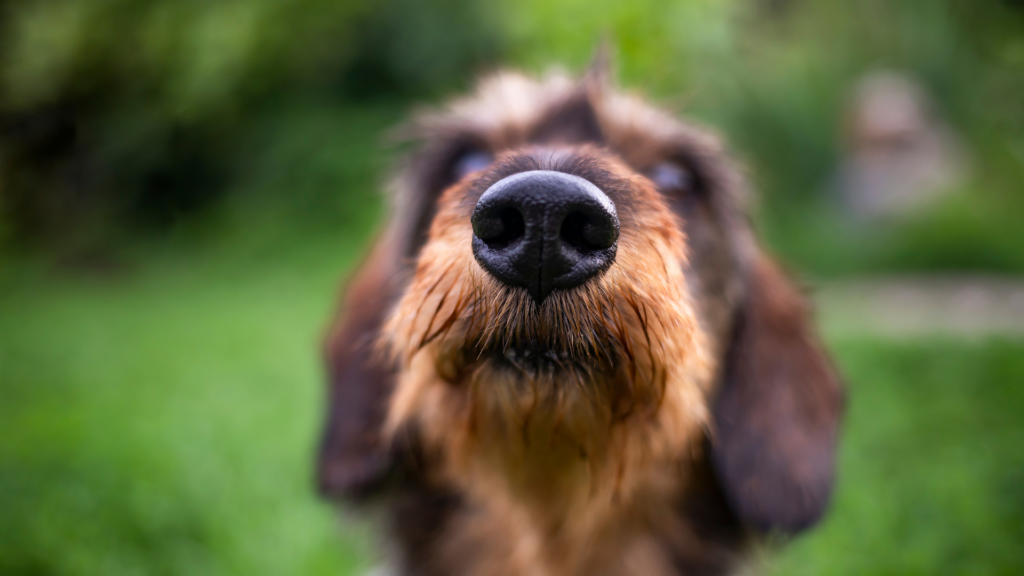
For dogs, sniffing is a big part of what makes walks enjoyable!
If you’re using a really short leash the only way for a dog to sniff IS if they pull you. Then the smell is rewarding so they’ve self-rewarded for the very behaviour that you’re trying to fix.
Oops.
If the best thing that happened to your dog on that walk (i.e. the sniff) occurred while they pulled, which behaviour do you think they’re encouraged to try again?
Pulling on leash!
Remember: Dogs repeat what works.
I strongly encourage you to try a longer leash!
For clients that are hesitant, a good bridge that I suggest starting with is a six foot leash. That way the dog can move off the path and sniff without any leash tension, but they’re still close enough to you that you feel like you can manage any situation that might arise. As you’re comfortable, try an 8 ft leash next.
Tip two: Bring two different kinds of treats on walks.
I like bringing two different kinds of treats on walks.
(I also love this two compartment treat pouch linked here)
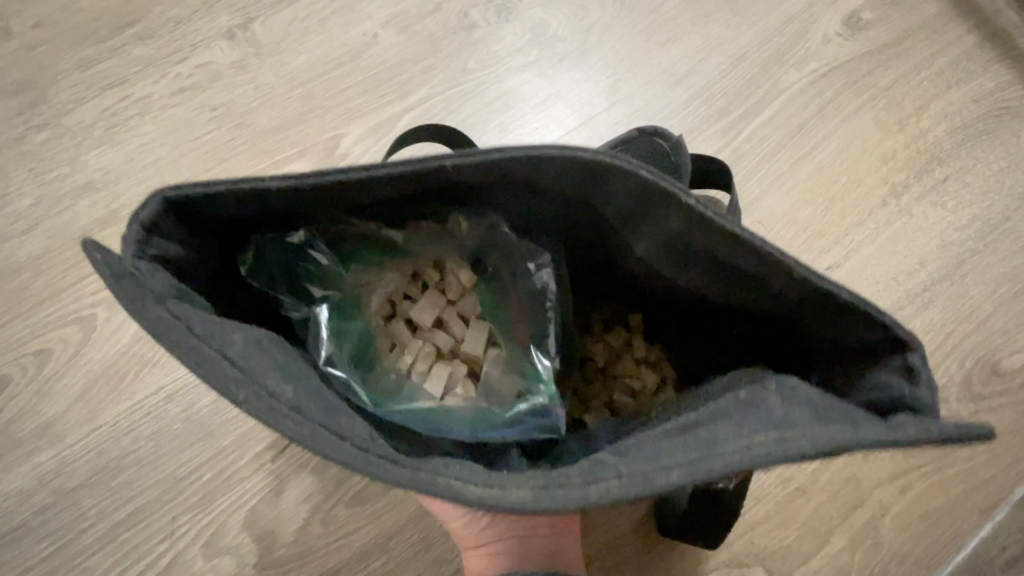
First: a regular dog treat such as beef liver, and second: something incredibly high value such as ground beef, chicken, or pork.
I start walks by using the extra high value item to capture that dog’s attention when we first go outside, and then I save it for really difficult moments that might arise during the walk. The rest of the time I use regular dog treats as the reward. That way the other item stays special! I find that using this two-reward system makes a massive difference.
Tip three: Utilize some version of the up and down game.
If you have a dog that tends to get over stimulated as soon as they’re outside, I really like dropping a treat onto the ground for them to sniff out, then marking and rewarding them for any version of re-orientating back to you.

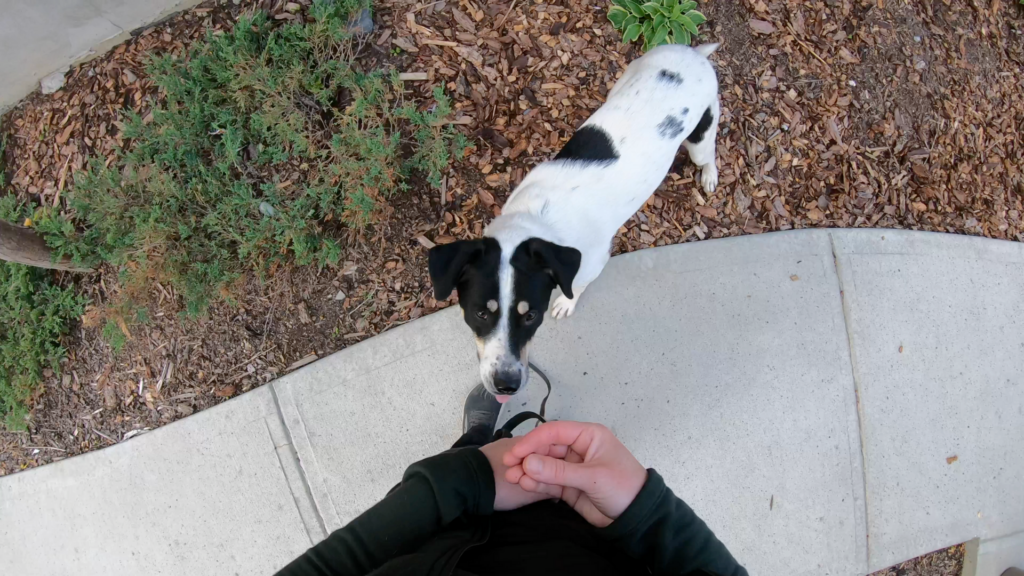
Repeat this a couple times at the beginning of the walk to get your dog more relaxed and to help them focus on you.
I use the same game later in walks if I notice the dog is getting over stimulated, or I modify it slightly by moving away to help train the dog to follow me after they found something of interest.
Tip 4: Start in as low of distraction setting as you can.
If there’s a quiet field or trail near you where you can practice their leash skills, I suggest starting there.
However, if you live in a city like me that’s not always easily accessible.
Instead when I’m just starting leash training, I try to walk at less busy times of the day and choose less busy paths. Once your dog is more solid on their skills, then you can increase the difficulty!
Tip 5: Practice name recognition and getting your dog’s attention.
If you only ever use your dog’s name to try to grab their attention when there is a trigger present, your dog is likely going to figure out that pattern.
What you’ll notice is they’ll start to scan the environment to see what YOU see rather than focusing on you when they hear their name.
Instead I encourage you to practice lots of repetitions where you say your dog’s name when there’s nothing around, and then reward them for focusing on you or for coming back.
We want that behaviour to be so rehearsed and so fast that it works great when there are distractions that our dog might go after.
You don’t want to start training a skill when you already need it!
Tip six: When your dog pulls to a smell, stand still to prevent that from working.
As we talked about earlier, sniffing is highly rewarding for dogs.
Therefore, if they drag you to a smell, they’ve actually self-rewarded for that behaviour.
Instead what I suggest you do if your dog starts pulling is to stand firm and prevent that from working, then encourage your dog back to you, and reward them for doing so.
Afterwards say okay or some other release cue and walk them back to the smell that they were originally interested in!
We want to encourage our dogs to sniff and enjoy the walk while still training them that leash tension doesn’t work.
*I do want to emphasize that I’m not intentionally putting tension on the leash as a training method or pulling the dog back to me. I’m simply preventing the tension that they’re adding from getting them what they want (the smell), and then I’m rewarding with both a treat and the smell for doing the behaviour that I wanted (loose leash walking).*
Tip 7: Reward every voluntary check-in (for at least a few weeks).
You really want a dog that pays attention and cares where you are in relation to them on the leash if you’re working on pulling. Rewarding your dog for every single check-in helps build that.
When a dog is just learning, I keep my criteria low by rewarding them for every time that they look at me. By rewarding every single check-in for the first few weeks you’re conditioning your dog to pay attention to you and where you are rather than just paying attention to the environment.
Even if you just implement this one tip, I’m confident that you’ll notice a massive difference in your walks!
Tip 8 : Interrupt before they pull.
I want to encourage you to really focus on your dog during training because most dogs are going to have a slight tell before they pull. You might see that their ears hone in on something or their pace quickens.
Try to learn your dog’s tell and catch those moments when you think that they *might* pull by calling them back to you before they do.
The less that we practice the behaviour of pulling, the sooner that you’ll get to enjoy fully loose leash walks!
Tip nine: Practice a management technique for situations that your dog isn’t ready for.
Until your dog’s leash skills improve, there will be situations that you encounter that your dog simply isn’t ready for. If you notice a situation that your dog isn’t ready for and you can’t avoid it, it’s a good idea to use management technique to prevent them from pulling or reacting.
I knew on our way home that Louie would want to go back to this dead bird and I wanted to avoid that. One of my favourite methods for management I refer to as Kong hand.
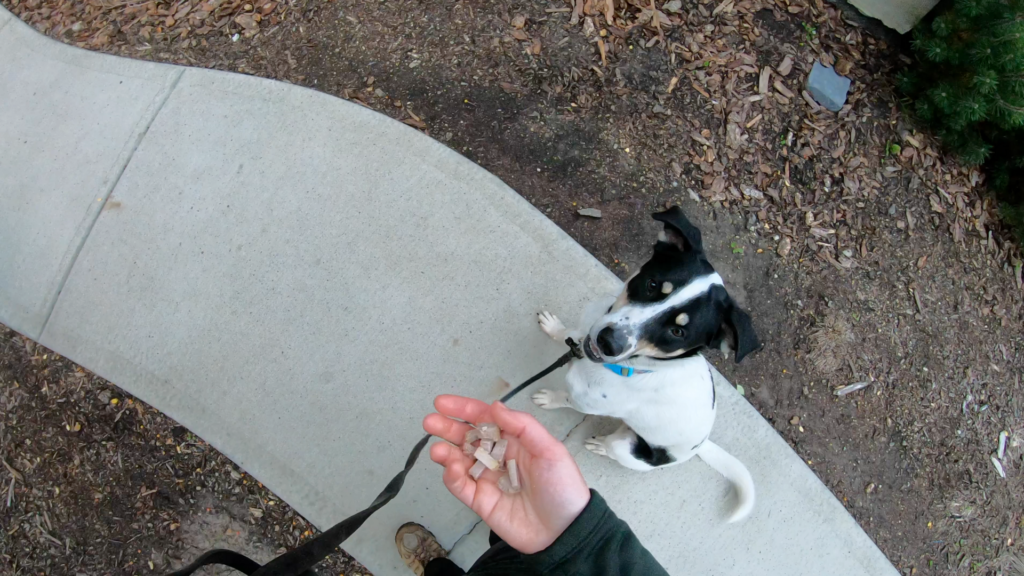
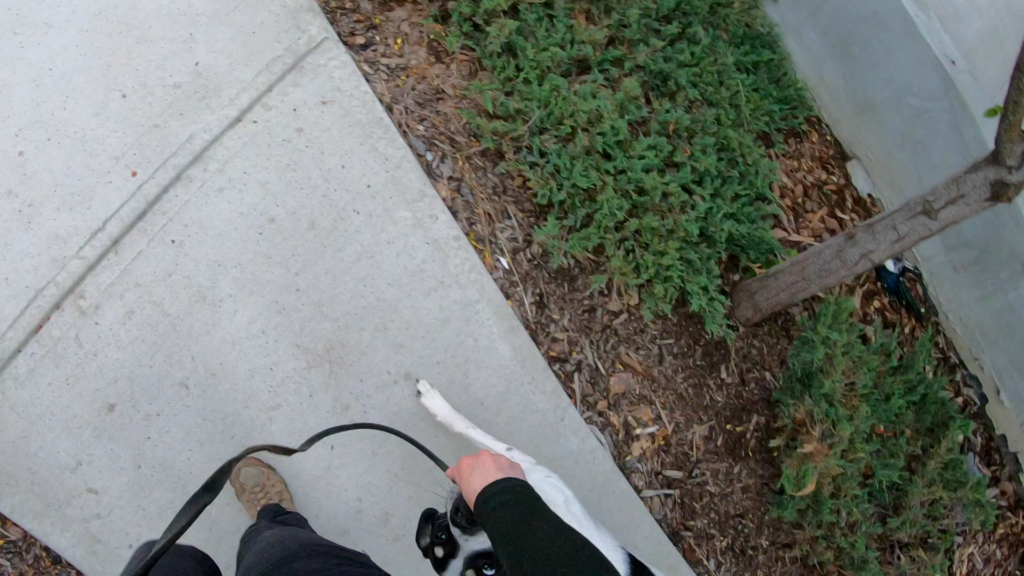
You’re going to have a bunch of small treats in your hand, give the cue (I say Kong) and then slowly feed them out to your dog as you walk past that situation that they aren’t ready for (such as a dead bird).
Management is a great way to avoid practicing the rehearsal of undesirable behaviours while the dog is still learning.
Tip 10: Keep walks short!
I want to remind you that it’s normal for learning new skills to be difficult for both you and your dog.
When a dog is just learning leash skills I like to keep walks to about 20 minutes. Many dogs will get more and more stimulated the longer you’ve been out, and the treats will become less rewarding since they’ve had quite a few.
There’s also going to be a limit to how long you can fully focus on implementing all of these tips and how much patience you have.
Try to do more frequent but shorter walks when your dog is just learning. That way you’re BOTH more likely to have a good time!
All of these tips should help immediately improve leash pulling and make walks with your dog more enjoyable.
Happy training! 🙂
Disclosure: Happy Hounds uses affiliate links. Purchasing with these links will not cost you any extra, but I get commissions for purchases made through these links. Affiliate links help me to continue to offer free resources & blog posts. I would love if you used them!
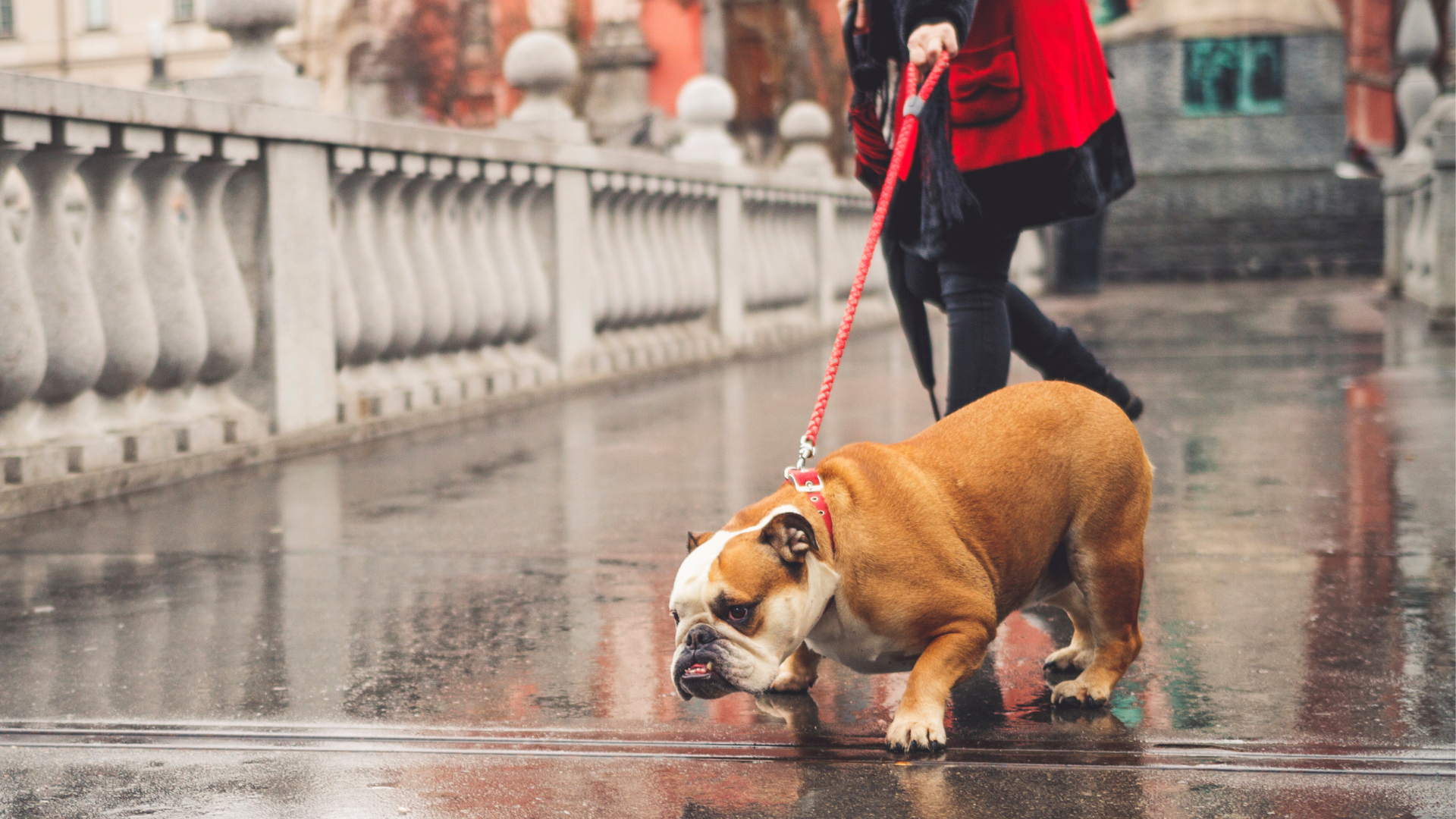
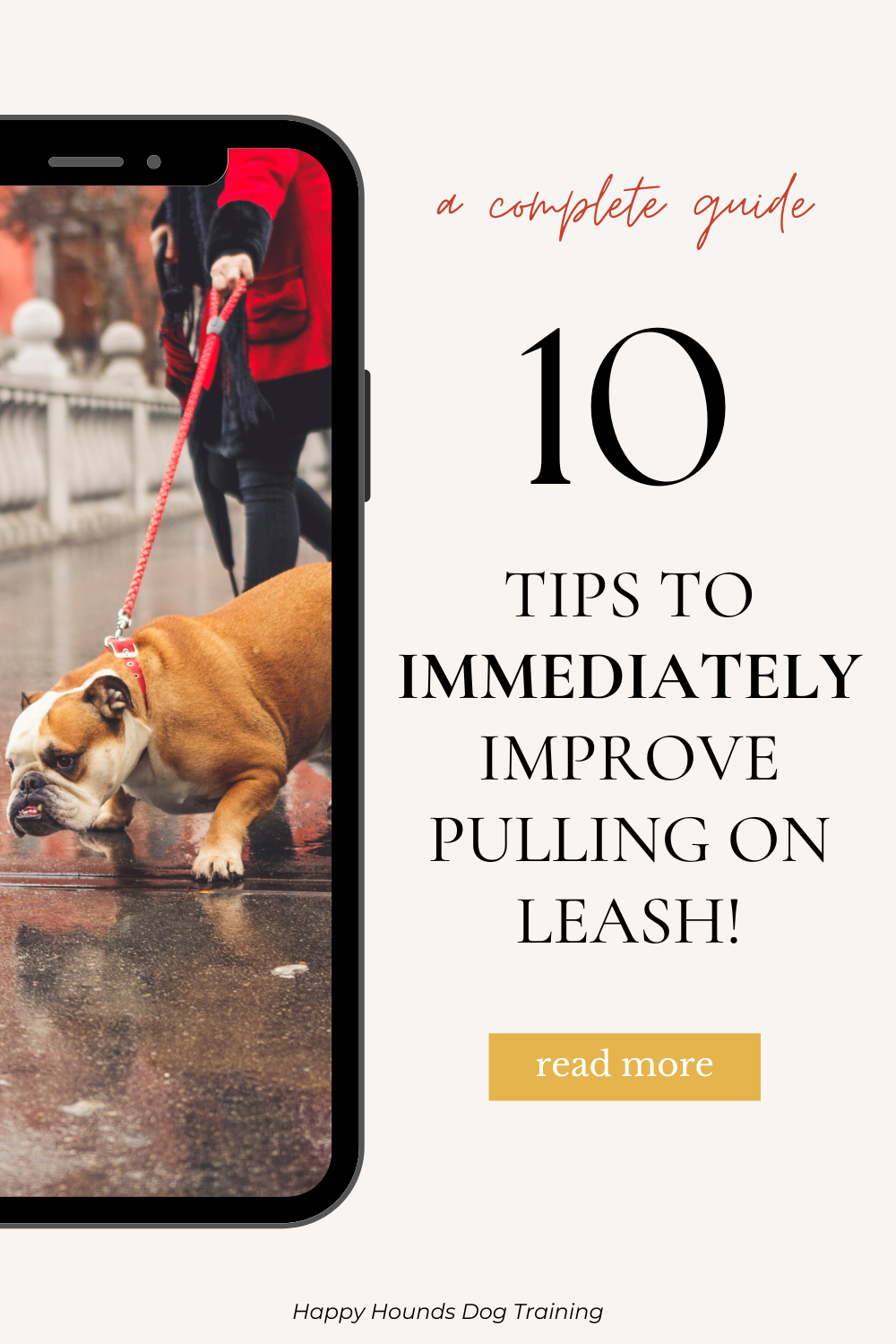
+ show Comments
- Hide Comments
add a comment